This season we’re going back to our roots in California’s wine country, where the first Williams-Sonoma store was opened. Along the way we’ll be spotlighting the local chefs, artisans and producers who have made the region a top culinary destination and continue to inspire us, in the kitchen and around the table.
Meet Robert Sinskey, the man behind some of the most prized Pinot Noirs in California wine country. At his namesake organic, biodynamic winery Robert Sinskey Vineyards, he and his wife Chef Maria Helm Sinskey bring food and wine together, celebrating the connection to the land and creating a unique culinary experience.
Here, we ask Robert all about how he fell into the wine business, what a typical day looks like for him, and his favorite ways to enjoy his wine.
Tell me about your background and how you became interested in wine.
My father always had an interest in wine, and he wanted us to sit at the table and treated the kids as adults. We’d all get a little splash of wine so we could join in on the toast. I never thought we would end up in the wine business. He had some very strong ideas about food and wine and wanted to retire as a grape grower. I went off to pursue my own life, and having grown up as a future farmer and worked in restaurants throughout high school and into college, I had a strong interest in the culinary world. But then I ended up going to art school and was pursuing photojournalism.
What made you want to do that?
I’m a child of the ‘60s and was very much influenced by LIFE magazine and the great photojournalists that changed our opinions about the war in Vietnam. I felt that by exposing people to the inconsistencies of humanity we could maybe improve our life situation. As reality set in, I began to see that photojournalism was becoming less about the story than about selling a magazine and becoming much more superficial. I felt that if I wanted to pursue this I would have to support myself through commercial work and pursue journalistic stories in the mold of Mary Ellen Mark, who does corporate work in order to support her journalistic work. I went into the fashion world, doing sports fashion and working with Gap and Levi and Nike. In the commercial world, you begin to feel like you’re selling out in many ways, not pursuing your dream and getting caught up in the production. We’d be editing until 2 in the morning and getting up for a 6 am call on set. It was great but I wasn’t seeing anything; I was being channeled into a studio environment.
When my father called and wanted help up here I decided to take a 6-month sabbatical and see what the business was all about. He wanted to retire growing grapes. He was selling his grapes to one winery in the mid-‘80s and ran into financial trouble and cancelled the contract, so we had 150 acres of grapes and no home for them. So we started making wine. I came to help out with the first vintage. I was supposed to be here for 6 months; we were going to build a winery and hire people to run it. After a few fits and starts we realized we couldn’t hire anyone and I needed to run it. It was only after a couple of weeks of being here that I realized it was a merging of all of my interests – the future farmer-agriculture side of my life and the culinary world — and I saw it as a great opportunity to meld all these ideas, and I could pursue the imagery on my own and not have to do it for commercial businesses.
If it wasn’t for Pinot Noir I probably wouldn’t have stayed. Pinot Noir was the most interesting wine to me at the time, the most challenging. It’s a fickle variety that always needs to be on that razor’s edge. It’s a high-risk varietal, thin-skinned, and it can rot easily – it’s very easy to miss the mark and pick overripe fruit. It keeps the adrenaline going. Also I find it the most sexy, the most cuisine-oriented.
How have things grown and changed?
I ended up taking over the winery side of the business in ’88. In ’91 we took over the vineyard operations from my father. Jeff Virnig is still our winemaker to this day; we’ve been working together for 25 years, and it’s been a really wonderful yin-yang relationship. We’re very opposite personalities but he fills in all the detail in my broad strokes.
Maria is very similar in that way. I met Maria in the mid-‘90s and she was a rock star chef of San Francisco at the time, in Food + Wine magazine’s Top 10 Chefs and the Rising Star Chef in San Francisco magazine, and doing amazing things at Plumpjack. We got married, we had kids, and we sell wine – the wine business is a very long-term, generational project.
You’ve worked with family, with Maria and with your dad – what has that been like?
Working for your father is always challenging. We had to work through our issues and define our roles so we could move forward. It’s very easy for a parent to second-guess a child and to remember when you were young and vacillating in your opinion and all the mistakes you made. It’s hard to accept a child as an adult. We sat down and defined our roles and that really helped us work things out.
With Maria, sometimes it’s hard to turn off the clock, but at the same time we chose our professions for our passion. She loves what she does and can’t set it down. When we dine out together it’s critiquing the food and thinking about it.
Is there anything that surprised you when you were starting out in the wine business? Anything you had to learn along the way?
I didn’t think we were going to last more than 5 years. I thought it was going to be a big flash in the pan, but I felt I had nothing to lose and went for it. It also allowed us a certain amount of freedom. Because of my upbringing, going to art school instead of viticulture school, it allowed me to define a style versus chasing a market and bring a team together to pursue that vision of style. It’s really an old-school philosophy; you want to do what’s right for the vineyards. But you also want to make sure you’re working as an artisan and not imposing your will on something and allowing it to speak. There’s a sense of purity that’s very unique to this industry but can be masked by overzealousness.
In the same way that Maria’s food philosophy is about using pure ingredients, not messing them up but finding ways to elevate them, we feel the same way about wine. We grow it well and try not to mess it up in the cellar. You want to adjust your technique to emphasize its strengths versus dominate it or even correct its weaknesses. Sometimes those weaknesses are what define character.
What’s a typical day like for you at the winery?
I don’t think I have a typical day. It’s running the business – defining the goals, doing all the marketing, PR, the sales – I’m wearing many different hats at any given time. In a sense, I’m forced to give away my favorite positions to other people. I’d love to spend more time in the cellar with Jeff (he’d probably be annoyed if I did). But a day can be anything from tasting the blends and defining the blends to making decisions about how we’re going to be aging the wines, and the strategy of how we’re approaching the vintage. Also, looking at how the wines are selling and how the distributors are performing. Creating unique culinary ventures in the winery.
What are some of those?
We’re in the process of doing a remodel at the winery. We’re going to have a full prep kitchen in the back, and we’re going to do a fireplace you can cook an entire lamb in. To me, wine is about food; it’s not an athletic event, it’s not about having the highest score and being the biggest, baddest on the block. It’s about a culinary experience. Only through food can you understand what the wine is about. We’re constantly creating – what is seasonal, how are we going to develop the gardens, what kind of trees are we going to plant for the long haul, are we going to develop a larger farm. We’re working on developing a 7-acre farm, a biodynamic operation that would start with the animals and flow down. It’ll be a nonprofit farm.
What do you love about your job?
Everything. The diversity of it. The fact that it does encompass many different disciplines — and it’s one of the few professions where you get to eat and drink for a living. My favorite part is looking at farming as a holistic endeavor. We want to be able to work with the efficiencies in nature and constantly step back and see how nature’s forces work and try and complement them. We want to undo the traditional damage that more industrialized farming does.
What sets your wines apart?
They’re honest wines. They are all about purity, working with the land, improving the land, creating a natural balance across the board. We’re looking at creating a situation in the soil where the vines can access nutrients as they need them versus waiting for us to input. It’s a long, slow process, and our vines tend to have smaller canopies as a result. They’re always in a state of stress, but they can withstand the stress of drought and weather extremes. You have a balanced canopy and a balanced crop, and as a result they will be more relaxed in the cellar. We don’t believe in anything dishonest – we don’t de-alcoholize the wines. We try and keep things as natural as possible.
Any favorite pairings or go-to wines?
Pinot Noir is really the wine for truffles, for game birds, for offal, for mushrooms – Pinot Noir is my go-to grape, particularly as we get into the fall and winter seasons. To me, it’s the ideal wine for the foods that I love. For the aromatic whites, Maria does a killer tarte flambee and a wonderful choucroute garnie. For a day-to-day wine, I go to the aromatic whites more than anything else, but there is the occasion where you want a nice dry-aged ribeye, and the POV makes much more sense.
Shop Robert Sinskey wines, and meet more vintners and other locals from the California wine country.
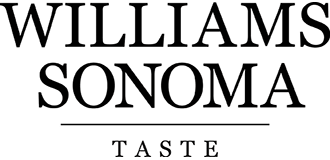
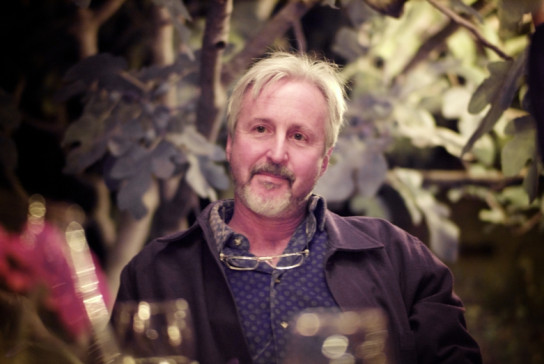
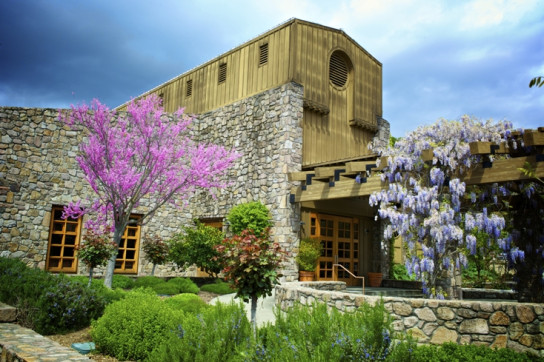
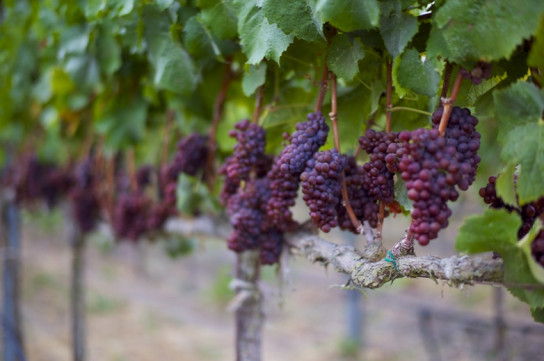
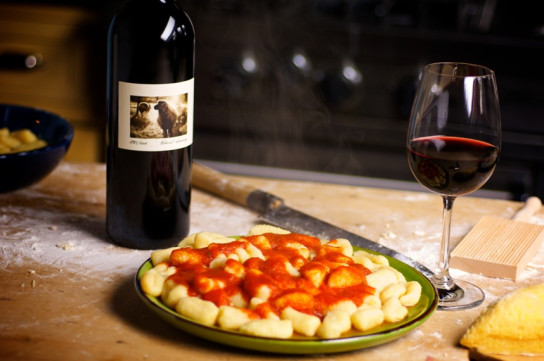
5 comments
I am a 4 time Cancer Patient., I would go to my sisters from Michigan to CT. and thoroughly enjoy your wine. Ingact, it was a highlight of my visit. I dont know alot about wines but have been reading up on yours…My sisters husband wiuld take out a bottle of Pinot Gris Late..2011..I love a goid Muscato..so they would make fun of me. But this wine was so lovely….it was different than any orher Ive ever had…i took a picture of the bottle. How can I purchase this wine please? Thankyou, so much. Sincereky, Lynda Novak
I saw an article about Robert Sinskey Wines while on a flight! I thought to myself, I know that name, but where do I know it from.
Then I remembered that my brothers and I played Little League Baseball with a Robbie Sinskey in Cambria, CA in 1973!
I hope this is the same Robert Sinskey, but even if it isn’t, I’m looking forward to trying his Pinot Noir!
Good job Sinskey family, congratulation!
[…] where the vintner’s wife, Chef Maria Helm Sinskey, is Culinary Director. Get to know Robert and Maria in our exclusive […]
[…] Robert Sinskey Vineyards, wine is part of a culinary experience. And while Robert Sinskey is at the helm of the wine business, it’s his wife, Chef Maria Helm Sinskey, who’s […]